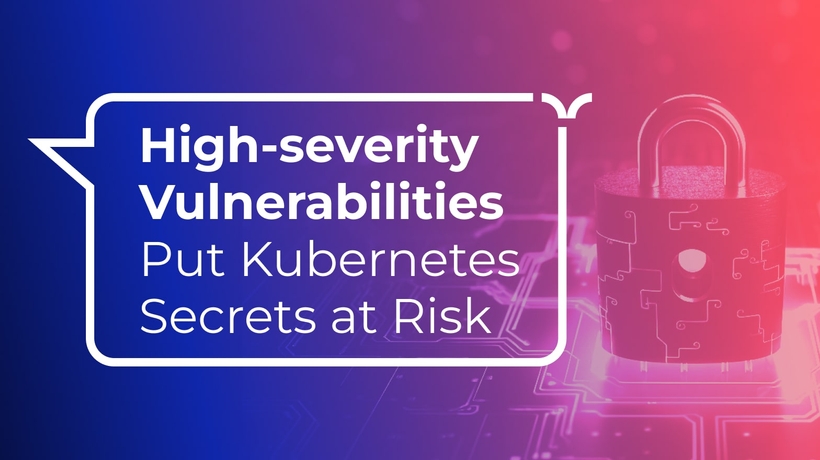Critical NGINX Vulnerabilities in Kubernetes Ingress Controllers
Cloud Security Analyst at Cyscale
Monday, November 6, 2023

Three high-severity security vulnerabilities have been disclosed in the NGINX Ingress controller for Kubernetes, which could put credentials and other secrets at risk of theft by threat actors.
What are the NGINX Ingress controller vulnerabilities?
On October 27, 2023, three critical vulnerabilities were disclosed and assigned the following CVE numbers:
All three vulnerabilities allow an attacker to execute arbitrary command execution and obtain the ingress-NGINX controller credentials. These vulnerabilities have been assigned a CVSS score of 7.6 (the first two) and 8.6 (the third one), ranked HIGH.
To better understand how the vulnerabilities can be exploited, what the impact is on your cloud infrastructure and how they can be patched, let’s dive deeper:
What is an NGINX Ingress controller?
The ingress-NGINX controller is a specialized load balancer for Kubernetes and other containerized environments that accepts incoming traffic and routes it to Kubernetes pods. The NGINX Ingress controller is designed to be a central point of entry into a Kubernetes cluster adding a layer of abstraction to reduce routing complexity.
To put it simply, it’s like a traffic policeman that tells all vehicles on a road where they are and are not allowed to go.
An ingress-NGINX controller is a specific implementation of an Ingress controller that uses the NGINX web server, which is known for its speed and efficiency.
The 3 NGINX Ingress controller vulnerabilities in detail
CVE-2023-5043
Annotations are key/value pairs that can be attached to Kubernetes objects in order to add additional information to those objects.
Due to poor input sanitization, the annotation nginx.ingress.kubernetes.io/configuration-snippet can be used to inject command execution.
The “configuration-snippet” annotation, or metadata, allows users to inject custom configuration code into the NGINX configuration file.
CVE-2023-5044
This vulnerability occurs for the nginx.ingress.kubernetes.io/permanent-redirect annotation. This annotation allows you to establish a permanent HTTP redirect (Return Code 301) by injecting arbitrary code via the annotation. As a result, the controller will redirect traffic to that path.
CVE-2022-4886
This issue can be exploited by someone with create or update permissions on ingress API objects.
The field spec.rules[].http.paths[].path allows you to specify where incoming requests to your applications should be routed based on the path in the URL. Since the input is not correctly sanitized, the attacker can specify an internal file as the path, obtaining the credentials of the controller. Thus, by exploiting the poor sanitization, the attacker gains access to sensitive data.
To prepare for these threats and any upcoming ones, book a free cloud security health assessment with Cyscale.
Impact of the NGINX Ingress controller vulnerabilities
Ingress controllers run with high privileges. By default, having access to the credentials of the ingress controller means you have access to all secrets in the cluster. As you can imagine, the impact of these vulnerabilities left unchecked can create significant risk for your data. So, it’s no surprise that the vulnerabilities described have been assigned such high CVSS scores.
Mitigation of the NGINX Ingress controller vulnerabilities
To protect your cloud environment from these vulnerabilities, follow these steps:
- for CVE-2023-5043 and CVE-2023-5044, update NGINX to version 1.19 and set the --enable-annotation-validation flag,
- for CVE-2022-4886, change the pathType attribute of the controller to Exact or Prefix. This will allow only paths that start with “/” and contain alphanumeric characters, “-“, “_”, and additional “/”.
The impact of NGINX Ingress controller vulnerabilities on cloud environments
The next question is, are cloud environments impacted by these vulnerabilities? Yes! Many cloud environments run Kubernetes clusters with NGINX-ingress controllers. For a cloud-native company building software that heavily relies on Kubernetes and employs ingress-controllers, there are significant risks involved. If exploited, these bugs can lead to unauthorized access to sensitive information stored in the cluster.
Moreover, the ingress controller manages incoming traffic, so the disruption of such a critical component of an infrastructure can cause availability issues leading to downtime and possible financial losses.
Cyscale customers are already protected, as the Cyscale cloud security platform surfaces assets affected by the NGINX Ingress controller bugs as long as their vulnerability scanner of choice has been updated.
You can also be protected from these vulnerabilities and any emerging threats, with Cyscale. Book a demo now.
Cloud Security Analyst at Cyscale
Sabrina Lupsan merges her academic knowledge in Information Security with practical research to analyze and strengthen cloud security. At Cyscale, she leverages her Azure Security Engineer certification and her Master's in Information Security to keep the company's services at the leading edge of cybersecurity developments.
Further reading
Cloud Storage
Misconfigurations

Build and maintain a strong
Security Program from the start.
Cloud Compliance in
2025: An In-Depth Guide
The whitepaper talks about ISO 27001, SOC 2, PCI-DSS, GDPR, HIPAA.
Download WhitepaperShare this article
Stay Connected
Receive our latest blog posts and product updates.
TOP ARTICLES
Cloud Security
Our Compliance toolbox
Check out our compliance platform for cloud-native and cloud-first organizations:

LATEST ARTICLES
What we’re up to

Why the world needs Cyscale in a post-Wiz era






